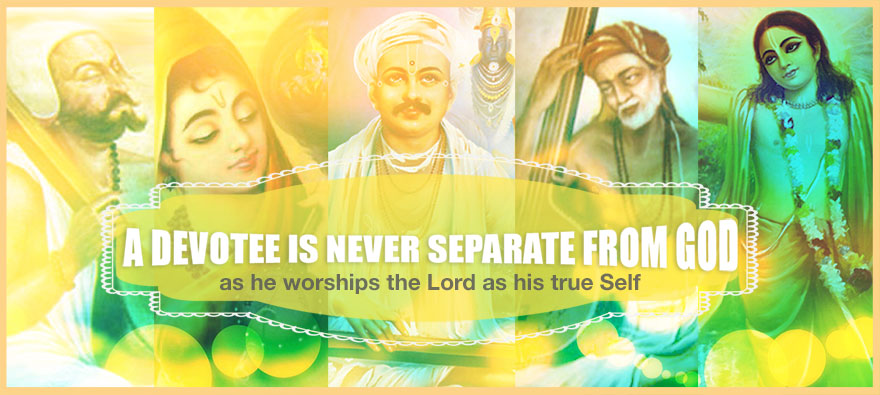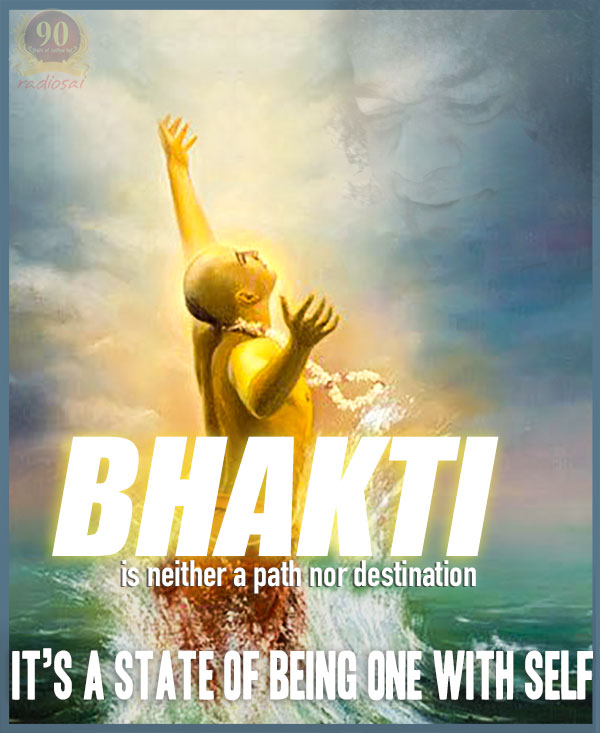|
|
| 'Like' us on Facebook | Follow us: |
Posted on: July 24, 2015
How Sadguru Sai Guided Me Towards True Bhakti
By Mr. S. Sai Giridhar
Mr. Sai Giridhar joined the Sri Sathya Sai Higher Secondary School in Prasanthi Nilayam for the 11th standard in 1999. He went on to study in the Sri Sathya Sai Institute of Higher Learning, Prasanthi Nilayam campus where he eventually completed his B.Sc. and M.Sc. (Chemistry) in 2006. He was then guided by Bhagawan to join the M.Phil programme which he completed in 2008. He then began his research in pursuit of a doctoral degree in the field of Clinical Chemistry, on the topic 'Lp-PLA2: A study of its role in Coronary Artery disease in Asian Indians and Novel detection methods using nano bio-sensors.' Coming from a family that has been visiting Prasanthi Nilayam for decades, he had the fortunate of being named by Bhagawan apart from having two important ceremonies - aksharabhyasa (initiation into education) and upanayanam (sacred thread ceremony) performed by Him. |
Swami once asked the students in the Bhajan Hall, “What is bhakti?” A student replied, “Swami, bhakti is love for You.” Swami said, “Yes, that is the right answer.” So, bhakti is love for God!
During my several journeys to the Himalayas, I have had numerous opportunities to meet sincere sadhakas who have dedicated their life to Self-discovery, to loving God. I had asked them a question that often troubled me: “Why is my sadhana not consistent?”
Interestingly, all of them had the same answer to give, “Your love for the world is more than your love for God.” This led to another question which kept lingering in my mind: “How do I love God?” for which I could never get any satisfactory answer.
'How To Love God' – A Clue from Sri Ramakrishna
I was once watching a motion picture on Swami Vivekananda, wherein a particular scene made a deep impact on me. Naren approaches Sri Ramakrishna Paramahamsa with a similar question; he asks the Master (Thakur) how to delight himself with the vision of Divinity, and love God as spontaneously as Sri Ramakrishna Paramahamsa does.
Thakur, who notices a housefly meandering around a glass of juice, says, “Look at this housefly! As long as it is going to move around the glass of juice, there is no way it is going to taste the juice. The only way the fly can taste the sweetness of the juice is by diving into the juice. The fly may lose itself in the process, but that is the only way!”
In Thakur’s words, I also found directed towards my answer. Firstly, I need to take a plunge into that Cosmic uncertainty, and not merely meander along its boundaries.
 |
Secondly, there is a good chance that I might lose myself in the process; a terrifying proposition for anyone who believes in journeying to a destination! Uncertainty still loomed large in my mind – not the cosmic kind!
Unsure of ‘where exactly the end of the cliff is’, ‘where I should plunge into’ and ‘how’, I continued my journey: sometimes trying namasmarana, sometimes doing what I thought was meditation. A part of my time would be spent on one spiritual activity and the other part on another – uncertain each time of which was going to be my medium to truly love God! Even as restlessness and dissatisfaction was creeping in, I heard an experience of one of our senior teachers at the Sri Sathya Sai University.
How To Receive Constant Grace from the Lord
Swami once called all the teachers of the school and college at Puttaparthi to His Brindavan Residence to bless them before the commencement of the new academic year. There were, then, many Brindavan students who were eager to enjoy the most coveted privilege of a 'Trayee Session' with Bhagawan.
When they pleaded with Swami to bless them with this privilege, Swami clearly expressed His equation: “Why should I give you a Trayee session? You all 'show' only part-time devotion. What I want is full-time devotion!”
The Master was to give His masterstroke then. Swami asked this senior professor seated nearby, “You have worked in a company, isn’t it?” The professor replied in the affirmative.
Swami then asked him, “What different types of employees were there in your company?” The professor replied that there were two types of employees, one temporary and the other permanent.
Swami then asked, “What is the difference between the two in terms of their payment?” The professor replied that the temporary employees were paid on a day to day basis, while the permanent employees had structured pay with basic, HRA, periodical increments and bonuses as well.
 |
Swami then said, “In the same way, for permanent devotees, I too shower constant grace, give bonuses and most importantly ‘dearness allowance’. Not just that, I also give them pension for their life (t)hereafter! But nobody seems to be interested in being a permanent devotee!”
A Worshipper Vs A Devotee
After listening to these nectarous words of Bhagawan, I understood that at best I was being a worshipper, or a temporary devotee. The difference between a worshipper and a devotee is that, a worshipper however ardent and sincere in his worship of the Lord, is rooted in fulfilment of his desires or some personal benefit.
A devotee, on the other hand, has no reasons to love God. This is, perhaps, why Swami sings, ‘No reason for Love, no season for Love, no birth, no death.’ The classic example to elucidate this difference would be the lives of Ravana, the greatest worshipper and Hanuman, the greatest devotee.
Understanding Bhakti Through 'Vibhakti'
It is also around this time that I came across a hitherto unheard beautiful meaning of bhakti from a wonderful devotee of Bhagawan. Swami had given the definition of bhakti as ‘Bhakti means where there is no vibhakti from God.’ The Sanskrit word vibhakti means separation or division. Bhakti literally means 'no separation'.
When we are asked to indicate the number two with our fingers, we (in India) would raise the index and the middle finger in separation. But if we join the two fingers with absolutely no gap between them, then it would be ONE and not two. That is bhakti. While there seems to be a Lord and His devotee, they are but in a state of union all the time. The merging of the apparent two into one is also called yoga, and the separation, viyoga!
It was on knowing this that an understanding dawned on a conversation we had with Swami in 2004. It was September 18, Ganesh Chaturti day, when we went to Bhagawan with a programme on the theme, ‘Navavidha Bhakti’.
Swami heard the title, and remarked, “Are you telling that Ganesha is beyond Navavidha Bhakti?” He then went on to add, “Vinayakudini gudi lo matram choosthe, akkade kanipistharu. Vinayakuduni nee atma roopam lo choodali. Appude meeru ekkada vellina akkada untaru” (If you see Vinayaka as stationed only in temples, He will appear only that way to you. You must see Vinayaka as Atman, then you will find Him wherever you are.”
Swami was in fact telling us the difference between a worshipper and a devotee. A devotee is never separate from God, as he worships the Lord as his true Self or Atman. Even as the bhaktas sing the glory of their Beloved, they are constantly aware that their beloved is not someone separate from them, but their own true Self! In this light, I began to see the couplets of Kabir, songs of Meera, or the abhangs of Tukaram as all conveying this exalted truth that all there is IS the ‘SELF’, all there is, ‘IS Krishna, Rama, Sai, God, Sadguru’ - all names of the ONE SELF!
 |
I now understood Sri Ramakrishna Paramahamsa’s words:
(a) ‘to take a plunge’ into the Cosmic uncertainty is to dive beyond the idea of a ‘partitioned’ me, beyond the body and mind, a separate name and form. When I readily say God is everywhere, then how am I exclusive of God?
(b) to lose myself in the process is to merge my identity with my Beloved, my Sai! Ganga and Godavari are rivers with their own identity, but when they merge in the ocean, they no longer retain their individual name or form; however sacred they may have been!
Swami says that the syllable ‘Sa’ represents divinity. Then is not ‘Sai’ simply merging the small 'i' into ‘Divinity’ or ‘Sa’? The only way for this to happen is to gain perfect understanding or perfect experience of the SELF that I am - a direct experiential understanding that a Sadguru alone is capable of conferring.
The Process of Attaining Grace of the Sadguru
“How does one earn the Grace of Sadguru?” was my eager and obvious question. In Swami’s words, it is chaala sulabham – very simple! Whatever actions are done by the body-mind complex, must be done for the pleasure of the SELF, our Beloved, our Sai alone and no other object or purpose. Is that not what we do when we are in love with someone? Whatever we do, we do for their joy. This includes breathing, eating, bathing, dressing up, studying, working and everything else. Then every activity is transformed into Sathkarma (noble deed). Sadhana literally means 'Sa (Divine) dhana (wealth)'.
 |
Once the divine account balance is sufficiently earned through Sathkarmas, and the time is right, the grace of Sadguru will dawn spontaneously. But merely having a heavy spiritual account balance is not sufficient for the divine cashier to give us the ultimate wealth we seek. We have to deposit the cheque of lagan (intense yearning) and ekagratha (one-pointedness) at His cash counter, His address: Hrudaya (our spiritual heart filled with compassion).
This is famously illustrated in the Meera Bhajan, Aisi laagi lagan, Meera hogayi magan, woh tho gali gali Hari gun gaane lagi. The intense yearning that Meera had, transmuted into supreme bliss and the songs she sang all along were really the reflection of transcendental bliss born out of union with Krishna, her Self!
The word Hari in this context has a unique meaning hari matlab jo sabko harletha hai [that which consumes in it everything - jagrata (waking), swapna (dream-sleep), sushupti (deep sleep) and turiya (the fourth state)].
Who is Sadguru? Sadguru is neither the form nor the formless. Sadguru is beyond all sense of duality. It is, in fact, revealed in the word Guru, where Gu stands for Gunatheetha (beyond qualities or attributes), Ru stands for Roopavarjitha (without a form). The gunas are themselves formless. By saying, 'beyond gunas', Swami emphasises on this truth that Guru is even beyond formlessness. That Sadguru divided Himself from Himself to Love Himself.
Once while Swami was describing Radha’s bhakti, He told the students that Radha’s life was “Union in Separation and Separation in Union”. Swami then asked if the students understood what He just said. When they pleaded with Him to explain, Swami expounded, “Radha was always in union with Krishna – ‘Her SELF’, when the physical Krishna was away from Her, but when the physical Krishna was with Her, she was so engrossed in serving Him that she was separated from the identity of ‘Her SELF’ as Krishna!”
Therefore, Bhakti, in my understanding, is truly neither a path nor destination, but a most spontaneous state of being ONE with my Self, or to put it simply, loving the SELF that I am. What do I really need to do to be mySelf? ‘I’ should not ‘entertain’ even a single thought that ‘I am’ anything unlike, or other than the ‘SELF’.
- Radio Sai Team
What are your impressions about the Article? Please let us know by writing in to h2h@radiosai.org or you may leave your thoughts in the comments section. Do not forget to mention your name and country.
| comments powered by Disqus |






